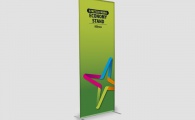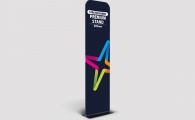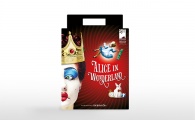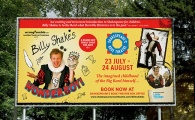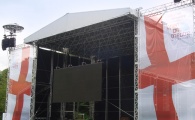Background
Although the nation’s favourite game continues to change, it’s clear that two things at least remain constant. Popularity for football remains on an upward trajectory and those who play at the highest level have the chance to be remembered forever.
The loyal fans of some of England’s biggest clubs take their seats in stands named after the countries’ biggest names. But who are they and how did they get there?
Hungry for stats, the Adverset team set out to find out which club servants have a stand named in their honour and what kind of businesses pay to see their names up in lights.
Listen to Adverset's Steve Atkinson presenting our research on Yorkshire Coast Radio
Putting 92 English football clubs under the spotlight

145 years of history
Back in the days when VAR would be stuff of science fiction, football clubs were being founded up and down the country. The first of these was Sheffield FC who were established in 1857 and now play in the eighth tier of English football.
As for the top 92 clubs in the country, Aston Villa, Bolton Wanderers and Macclesfield Town are the oldest clubs (each founded in 1874). Meanwhile, League One’s MK Dons are the newest club in the top four tiers. They were formed in 2004 after Wimbledon FC controversially relocated to Milton Keynes.

More success equals more seats
If there’s another bit of space up in the gods of Old Trafford, you’ll bet there are plans to put seats there. The stadium has been extended 4 times in the last 30 years and with a capacity of 74,879, it is the largest club ground in the country.
How about the smallest stadium in the top four divisions? That belongs to League One’s AFC Wimbledon (4,850 seats), another club to be born from the ashes of the old Wimbledon FC.
Players stand the best chance of being honoured

27% of clubs have a stand named after a player or manager
Since the early 1990’s it’s become more and more common for clubs to name a stand after one of their legends. Of the top 92 clubs, there are 25 in total who have honoured at least one player or manager in this way. Some make a habit of it…
Preston North End use all four sides of their stadium to honour legends of the past. Those recognised include Sir Tom Finney, who played for the club 473 times, and iconic FA Cup winning midfielder Bill Shankly.
There’s also a stand at Deepdale dedicated to a whole team – the “Invincible” side of 1889, which played a whole season without suffering a defeat, Arsenal style.
Players turned managers are a popular choice
Cup winning managers, record goal scorers and iconic captains – these are the types of legends to see their name up in lights at their old stomping ground. Many of them have ticked more than one of those boxes.
Take Liverpool’s Kenny Dalglish for example. Not only did he spend 13 years as a player at Anfield, he also clocked up 6 memorable years there as a manager. He is one of 7 stand-adorning legends who served their club as both a player and manager.
Wolves legend Stan Cullis is another of them. He is the oldest ex-player to be honoured with a stand in the top four leagues, with his last appearance coming in 1947. Stan clocked up 152 appearances for the midlands club and then went on to manage them for 16 years.
The most recent recipient of a stand is also a player turned manager – Macclesfield Town’s John Askey. Last year, the League Two side honoured Askey’s 34-year spell at the club, in which he served as a player, coach and manager. In that time he became the club’s record appearance holder and fourth highest goal scorer.
How long do legends wait for their stand?
After a player’s last game for their club, it takes on average 37 years before they are recognised with a stand in their name. For Managers, the timeframe between their last game in charge and the opening of their stand is much shorter. It takes 19 years, on average, for legendary gaffers to be honoured.
Many players or managers are honoured with a stand in their name after their death. Others like Nottingham Forest manager Brian Clough are celebrated upon their retirement.
In the case of Alex Ferguson, the unveiling of his stand came on the 25-year anniversary of his appointment at Manchester United (November 6th 1986). Thirteen league titles, one knighthood and an industrial amount of chewing gum later and the North stand was alight with his name.
45% of football clubs have a sponsored stand

The lower the division, the more stands are sponsored
As the stats above clearly show, the further down the football pyramid you go, the more common it is for stands to be named after a sponsor.
One in ten clubs name all four of their stands after sponsors, including the Championship’s Hull City. At the KC stadium, Tigers fans are housed in stands named after a solicitors firm, medical equipment company, construction supplier and food manufacturer.
Up in the Premiership meanwhile, there are 5 stadiums that are named after sponsors. However, just three businesses have named stands. These include the Ladbrokes stand at Burnley and Aviva Community Stand at Norwich.
Local businesses
At the start of this season Adverset were proud to sponsor a stand at our hometown club, Scarborough AFC and we’re not the only business to get behind our local team.
Other businesses standing behind their closest club include Chadwick Lawrence solicitors in Huddersfield, KCM Waste Management in Rotherham and Homeserve in Walsall.
Media, fashion and food brands are the biggest sponsors

It’s not just stands that are sponsored of course. These days clubs have an official sponsor for everything…official kit supplier, official hairdresser, official pie provider. You name it. The result of this is that there is a vast total of 1053 sponsors listed on the websites of the 92 clubs. That’s an average of 11 sponsors per club.
There are of course all manner of businesses attracted to football sponsorship. But certain types are more common than others in the top four tiers of English football. Accounting for 11% of all sponsors, media organisations such as newspaper groups, gaming apps and marketing companies are the most common sponsor.
They are closely followed by fashion (9%) and food (7%) brands. Interestingly the top three sponsor types differs when you focus on different leagues.

Gambling and alcohol sponsors are a sure bet for higher tier clubs
A recent survey found that only 13% of football fans would be happy for their team to be sponsored by a gambling company. The reality is that there are 50 gambling sponsors in the top two leagues alone.
In the Championship 66% of teams list betting companies as partners and this rises to 85% in the Premiership. Premiership clubs currently without a gambling partner include Liverpool and Chelsea who were forced to drop their sponsor, 1xBet, in September.
It’s a similar story with alcohol, which adverts often depict as another staple element of the stereotypical fan lifestyle. Over half (56%) of clubs in the top four tiers have an alcohol sponsor and 3 out of 4 Premiership clubs partner with booze brands.

















